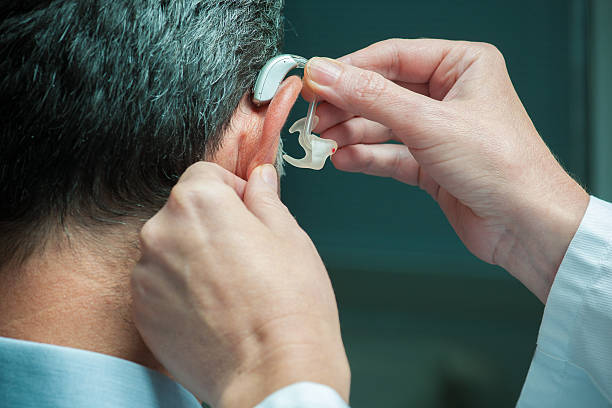Your skin evolves as you move through different stages of life, influenced by genetics, lifestyle habits, sun exposure, and how consistently you care for it. In your 20s, you might be focused on prevention and setting a strong foundation, while your 30s and 40s often bring concerns like dullness, fine lines, or uneven texture. Because these changes can be gradual, many people benefit from professional support to understand what their skin truly needs at each stage. That’s why consulting a reputable acne scar treatment Singapore clinic can be helpful, offering expert assessments and personalized plans that support healthier, more resilient skin over time.
Skincare in Your 20s
Did you know your skin cells regenerate every 28 days during your twenties, making this the optimal time to establish protective habits that will benefit you for decades? Your twenties mark peak collagen production and cellular turnover. Sebaceous glands remain highly active, often causing breakouts even as teenage acne subsides. Sun damage accumulated during this decade won’t show visible effects for another 10–15 years, making prevention particularly important now.
Start with a basic routine incorporating:
- Cleanser
- Moisturizer
- SPF 30+ broad-spectrum sunscreen applied daily, including cloudy days and indoor work environments near windows
Chemical exfoliants containing salicylic acid or glycolic acid address both acne and early texture concerns. Retinol products introduce vitamin A benefits for young skin.
Antioxidants like vitamin C neutralize free radicals from pollution and UV exposure when applied each morning before sunscreen. Niacinamide regulates oil production while strengthening the skin barrier. These ingredients work synergistically when layered correctly: vitamin C first, followed by niacinamide after complete absorption.
Professional treatments to consider include:
- Chemical peels for persistent acne or uneven texture
- LED light therapy sessions targeting acne bacteria with blue light while red light stimulates collagen production
- Hydrafacials for deep cleansing without irritation, particularly for combination skin types
A dermatologist or qualified skincare professional can help determine appropriate concentrations, frequencies, and treatment options for individual skin needs.
Skincare in Your 30s
Cellular turnover slows during your thirties, causing a duller complexion and slower healing from breakouts. Fine lines appear around the eyes and mouth from repeated expressions, while sun damage from previous decades begins surfacing as mild hyperpigmentation. Hormonal fluctuations, particularly in women, may trigger adult acne along the jawline and chin.
Consider upgrading your retinol to prescription tretinoin or over-the-counter retinaldehyde for collagen stimulation and cellular renewal. Peptide serums containing matrixyl or argireline support structural proteins, while hydrating ingredients like hyaluronic acid address early volume loss. Alpha arbutin or kojic acid targets emerging dark spots differently than vitamin C alone.
Eye cream becomes important, with formulations containing caffeine for puffiness, peptides for firmness, and retinol for crow’s feet applied nightly to the orbital bone area. Exfoliation frequency increases using AHA/BHA combinations, with lactic acid offering gentler results than glycolic acid for sensitive skin developing with age.
Professional interventions expand to include microneedling sessions to stimulate collagen production and enhance product absorption. Intense Pulsed Light (IPL) treatments target sun spots and broken capillaries with minimal downtime. Preventive neurotoxin injections for expression lines on the forehead and around eyes may help maintain smooth skin texture.
Skincare in Your 40s
Hormonal changes significantly impact skin behavior during your forties, with declining estrogen levels reducing collagen production. Skin thickness decreases while trans-epidermal water loss increases, creating dryness even in previously oily skin types. Expression lines deepen into static wrinkles visible at rest, while volume loss becomes noticeable in cheeks and temples.
Tretinoin at 0.05–0.1% concentration may be prescribed, supported by growth factor serums containing epidermal growth factor (EGF) or transforming growth factor beta (TGF-β). Bakuchiol offers retinol-like benefits for those unable to tolerate vitamin A derivatives. Ceramide-rich moisturizers restore barrier function while squalane provides non-comedogenic hydration for increasingly dry skin.
Include neck and décolletage treatment in your routine, extending all active ingredients below the jawline where aging signs often appear first. Exfoliation shifts toward gentler options like polyhydroxy acids (PHAs), providing benefits without irritation. Vitamin K cream addresses under-eye darkness from thinning skin revealing blood vessels beneath.
Professional treatments at a dermatology clinic might include fractional CO₂ laser resurfacing for texture improvement and wrinkle reduction. Radiofrequency treatments stimulate deep collagen production while tightening existing fibers. Dermal fillers restore volume in nasolabial folds, marionette lines, and cheeks, with results lasting 12–18 months.
Skincare in Your 50s and Beyond
Post-menopausal skin experiences accelerated changes with significant collagen loss. Cellular turnover slows considerably, impacting wound healing and product effectiveness. Lipid production decreases substantially, compromising barrier function and increasing sensitivity.
Gentle cleansing becomes important using creamy, non-foaming formulations that preserve natural oils. Prescription treatments may include topical estrogen cream for improved thickness and elasticity under dermatologist supervision. Alpha-lipoic acid supports cellular energy production while providing antioxidant protection.
Layer multiple hydrating products including hyaluronic acid serums, facial oils containing rosehip or marula, and occlusive night creams with shea butter. Gentle exfoliants like mandelic acid or enzyme treatments maintain renewal without irritation. Copper peptides support wound healing and collagen synthesis.
Professional treatments include combination approaches using multiple modalities in single sessions. Picosecond lasers address pigmentation with minimal thermal damage. Platelet-rich plasma (PRP) injections utilize your own growth factors to stimulate regeneration. Thread lifts provide structural support using absorbable sutures that encourage collagen formation.
Building Your Age-Appropriate Routine
Morning routines across all ages should prioritize protection:
- Gentle cleanser
- Antioxidant serum
- Moisturizer
- Broad-spectrum SPF applied generously to face, neck, and hands
Evening routines focus on repair with double cleansing, treatment serums targeting specific concerns, retinoid application, and rich moisturizer. Allow 60–90 seconds between layers for absorption.
Introduce new actives gradually, once weekly, increasing frequency over several weeks while monitoring for irritation. Patch testing behind the ear or along the jawline prevents widespread reactions. Keep notes about combinations that cause sensitivity, as ingredient interactions often trigger problems rather than single products.
Seasonal adjustments maintain balance year-round — more hydration and less exfoliation in colder months, lighter textures and higher antioxidant protection in summer.
What Our Dermatologist Says
Consistency matters more than price — patients using basic routines regularly show better results than those using expensive products sporadically. Skin responds to cumulative effects rather than dramatic interventions, with visible improvements after consistent use.
Timing affects results too. Morning antioxidants protect during the day, while evening retinoids work best during sleep when repair peaks. Growth factors and peptides perform better when used together.
Internal health also plays a major role. Diets high in sugar promote glycation, which stiffens collagen fibers. Chronic inflammation accelerates skin aging. A balanced diet rich in protein and omega-3s supports collagen synthesis and barrier function.
Commonly Asked Questions
At what age should I start using retinol?
Consider gentle retinol products around age 25–28 when collagen production begins to decline. A dermatologist can recommend the right concentration and frequency. Earlier use may help acne-prone skin, while sensitive types may wait until their thirties.
Can I use vitamin C and retinol together?
Vitamin C works best in the morning, retinol at night. Combining them may cause irritation unless formulations are designed to be compatible. Consult your skincare professional for safe layering.
How often should I change my skincare routine?
Assess every 3–4 months. Small swaps are better than overhauls, which can shock the skin. Adjust for weather, hormones, or new concerns.
Do expensive products work better than drugstore options?
Efficacy depends on formulation, not price. Affordable brands often contain identical actives as luxury lines.
Should men follow different skincare recommendations?
Men’s skin is thicker and oilier, often tolerating stronger exfoliants and higher retinoid concentrations. Shaving provides mild exfoliation, so fewer chemical exfoliants may be needed.
Conclusion
Building a skincare routine that evolves with your age ensures healthy, resilient skin for life. Start preventive habits early, maintain daily SPF, and adjust actives as your skin matures. If you’re facing uneven tone, texture changes, or visible aging signs, consult a dermatologist for personalized advice and treatments designed for your skin type.















